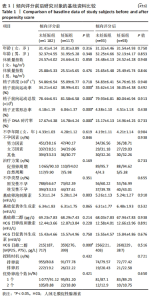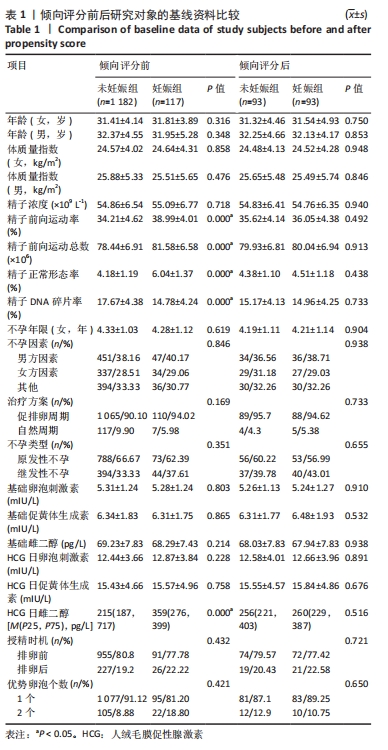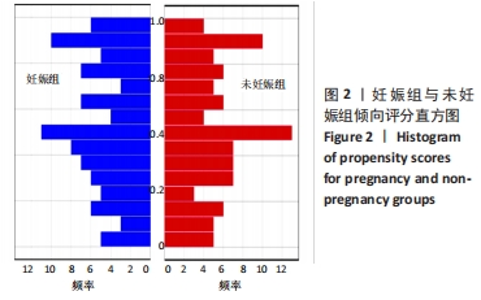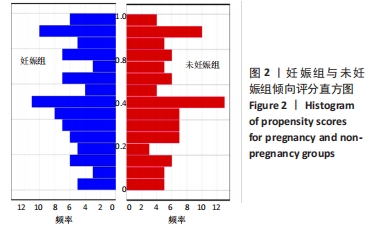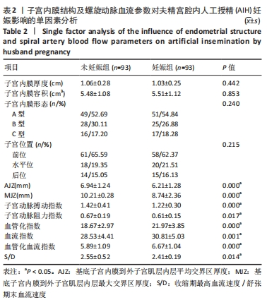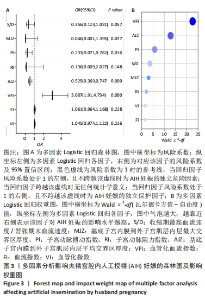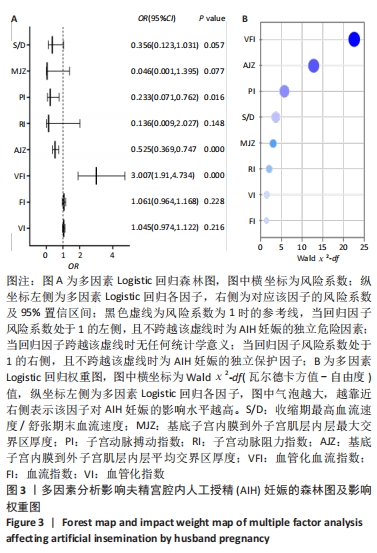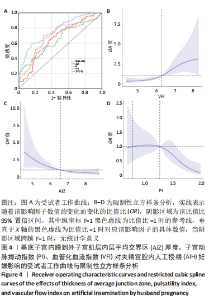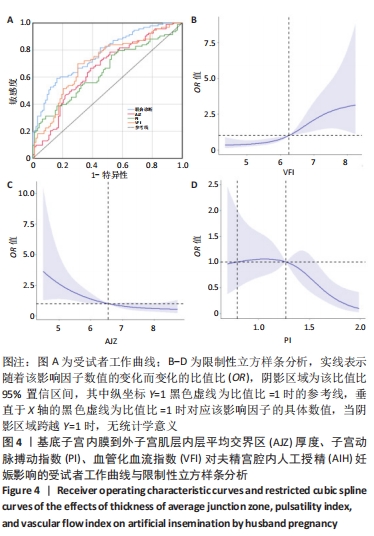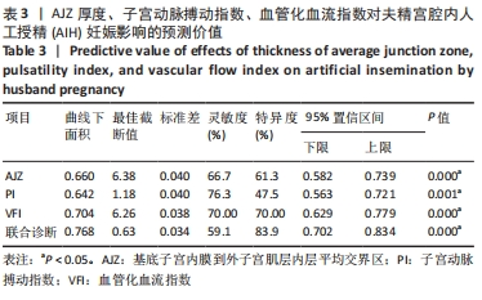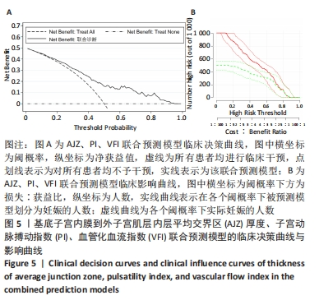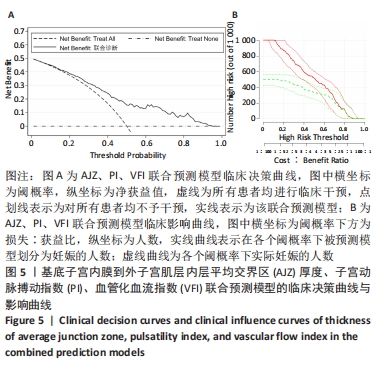[1] 张孝东,邓成艳,黄学锋,等.中华医学会生殖医学分会:2019年辅助生殖技术数据报告[J].生殖医学杂志,2022,31(8):1015-1021.
[2] 周园,郑备红.1907个夫精人工授精周期妊娠结局的女方影响因素分析[J].中国现代医生,2022,60(31):5-10.
[3] 马晓娟,岳小妹,乔婷,等.影响夫精人工授精妊娠结局相关因素分析[J].华北理工大学学报,2022,24(4):260-265.
[4] WANG X, ZHANG Y, SUN HL, et al. Factors Affecting Artificial Insemination Pregnancy Outcome. Int J Gen Med. 2021;14:3961-3969.
[5] 陈子江,刘嘉茵,黄荷凤,等.不孕症诊断指南[J].中华妇产科杂志, 2019,54(8):505-511.
[6] 弓瑜,李文凯.三维超声评价卵巢内胚窦瘤的子宫内膜容受性价值[J].实用癌症杂志,2019,34(11):1894-1897.
[7] 陶沙,吕莎,曾贞.经阴道超声检测参数对PCOS不孕症患者子宫内膜容受性的评估研究[J].中国性科学,2020,29(8):75-78.
[8] 邓弼云,陆敏姣,姬亚敏,等.超声静脉造影和腔内造影在鉴别诊断绝经后子宫内膜良恶性病变中的应用价值[J].中国医师杂志,2019,21(4): 561-564.
[9] BAJAJ NS, OSBORNE MT, GUPTA A, et al. Coronary Microvascular Dysfunction and Cardiovascular Risk in Obese Patients. J Am Coll Cardiol. 2018;72(7): 707-717.
[10] 罗小琼,覃莉,韦敬锡.影响夫精宫腔内人工授精妊娠率相关因素的研究进展[J].右江医学,2018,46(6):733-736.
[11] 徐仰英,王海燕,乔杰,等.影响宫腔内人工授精妊娠率的临床因素分析[J].北京大学学报,2013,45(6):887-891.
[12] 李梅,刁飞扬,吴春香,等.经阴道三维超声对不孕不育患者宫腔病变的诊断价值[J].中华医学超声杂志,2020,17(5):441-446.
[13] NI J, HAN B, LIANG J, et al. Three-dimensional 3D ultrasound combined with power Doppler for the differential diagnosis of endometrial lesions among infertile women. Int J Gynaecol Obstet. 2019;145(2):212-218.
[14] ISAKSSON R, TIITINEN A, REINIKAINEN LM, et al. Comparison of uterine and spiral artery blood flow in women with unexplained and tubal infertility. Ultrasound Obstet Gynecol. 2003;21(2):174-180.
[15] 王旁逸,段冠华,叶丽河.早期先兆流产的预后与彩色多普勒超声监测子宫螺旋动脉血流情况的相关性[J].影像研究与医学应用,2021, 5(21):30-31.
[16] 吴丹,楼叶琳.经阴道超声检测黄体及子宫螺旋动脉血流用于诊断早孕流产的临床价值[J].中华全科医学,2021,19(5):830-837.
[17] 刘耘利,许伟标,刘琼珠,等.经阴道三维超声对体外授精-胚胎移植患者子宫内膜容受性的评估及对妊娠结局的预测价值[J].中国临床医学影像杂志,2021,32(6):426-431.
[18] 余彩茶,水旭娟,焦岩,等.子宫动脉及内膜血流在评估子宫内膜容受性及预测妊娠结局中的应用价值[J].医学研究杂志,2022,51(3):75-79.
[19] MISHRA VV, AGARWAL R, SHARMA U, et al. Endometrial and Subendometrial Vascularity by Three-Dimensional (3D) Power Doppler and Its Correlation with Pregnancy Outcome in Frozen Embryo Transfer (FET) Cycles. J Obstet Gynaecol India. 2016;66(Suppl 1):521-527.
[20] ZHANG T, HE Y, WANG Y, et al. The role of three-dimensional power Doppler ultrasound parameters measured on hCG day in the prediction of pregnancy during in vitro fertilization treatment. Eur J Obstet Gynecol Reprod Biol. 2016;203:66-71.
[21] 杨洁.三维阴道超声对子宫内膜-肌层结合带的观察在不孕不育及妇科疾病诊断中的应用价值[J].中国现代药物应用,2020,14(18):1-6.
[22] 陈丽荣,黄静,张步林,等.经阴道三维超声检测子宫内膜-肌层结合带对IVF-ET妊娠结局的预测价值[J].声学技术,2020,39(3):311-315.
[23] YOUNES G, TULANDI T. Effects of adenomyosis on in vitro fertilization treatment outcomes: a meta-analysis. Fertil Steril. 2017;108(3):483-490.e3.
[24] SCHWARZE A, NELLES I, KRAPP M, et al. Doppler ultrasound of the uterine artery in the prediction of severe complications during low-risk pregnancies. Arch Gynecol Obstet. 2005;271(1):46-52.
[25] 崔淑芳.彩色多普勒超声监测早期先兆流产患者子宫螺旋动脉血流指标的临床意义[J].中国实用医刊,2020,47(5):83-86.
[26] 吴丹,楼叶琳.经阴道超声检测黄体及子宫螺旋动脉血流用于诊断早孕流产的临床价值[J].中华全科医学,2021,19(5):830-837.
[27] 李芷舒,鲁海鸥,张宇明,等.不孕患者移植当日子宫内膜容受性评估对临床妊娠率影响研究[J].中国实用妇科与产科杂志,2020,36(3):264-266.
[28] DOLITZKY M, INBAL A, SEGAL Y, et al. A randomized study of thromboprophylaxis in women with unexplained consecutive recurrent miscarriages. Fertil Steril. 2006;86(2):362-366. |
